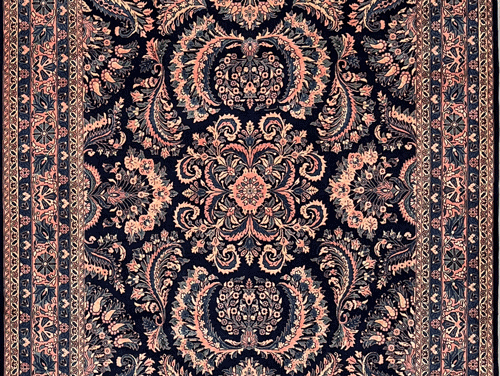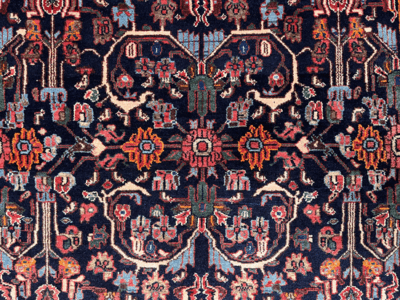Why antique Persian rugs are so expensive?

In the world of carpets, the axiom “all that glitters is not gold” holds true. The cost of a carpet is not solely dependent on its apparent beauty or size, but is influenced by a myriad of factors, each contributing its unique weight to the final price. From material and dyeing method to quality of weaving, size, age, region, pattern, and condition, each aspect plays a crucial role in shaping a carpet’s cost. Let’s unravel these factors one at a time to better understand the concept of Persian rug value.
Materials
The choice of material is the first building block in the creation of a carpet. materials like wool, cotton, silk, and many are used while each bring a different charm and price point. However, the quality grade within each material type is the real game-changer. Hand-spun wool, owing to its labor-intensive process, is pricier than machine-spun wool. Similarly, natural silk significantly outprices industrial silk due to its luxurious feel and durability.
Dyeing and Colors
The dyeing process and the choice of colors too have a significant impact on the carpet’s cost. Natural dyes, despite being more expensive than chemical colors, are favored for their unique hues and eco-friendly nature. Among natural dyes, some colors like blue can be even more costly due to the rarity and complexity of the ingredients and processes involved.
Weaving Quality
The quality of the weave can account for nearly half the price of the carpet. The tighter and more intricate the weave, the higher the quality and cost. This factor reflects the artisan’s skill and time invested in creating the piece.
Size and Age
Larger carpets generally cost more due to the increased material and labor involved. Age can also influence cost, but it’s a complicated factor. It doesn’t necessarily make a carpet more expensive; the impact of age on cost largely depends on the pattern and condition of the carpet.
Region and Pattern
The region a carpet comes from, and its pattern are tied together, as patterns often reflect regional styles and traditions. A rare pattern could make a carpet more expensive, echoing its unique heritage and craftsmanship.
Condition
This is perhaps the most challenging factor for clients to assess, yet it can drastically swing the Persian rug value A missing border or any kind of repair can significantly reduce a carpet’s value. For instance, a good rug costs 100,000 $ but the same rug in poor conditions will cost 1oo $. In conclusion, evaluating a carpet’s cost isn’t as simple as comparing two carpets side-by-side. It requires an understanding of a constellation of factors, each intricately woven into the carpet’s story. A carpet’s price is a multi-dimensional consideration, making it a complex, yet fascinating process to comprehend.


